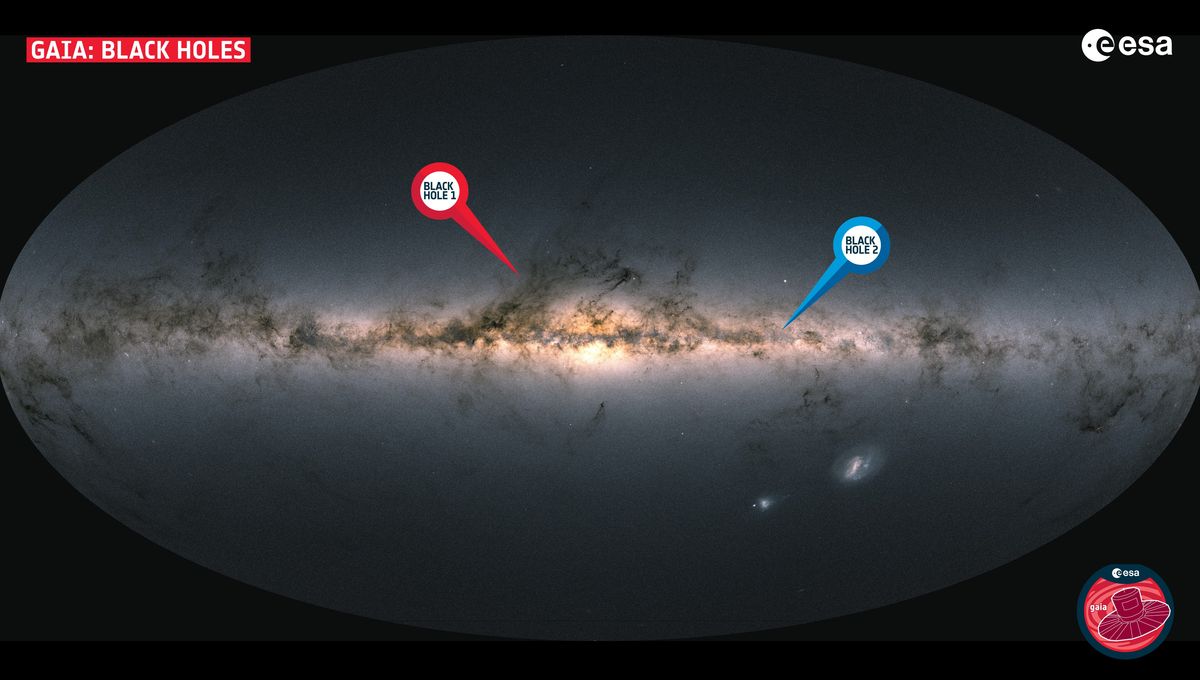
The Gaia satellite from the European Space Agency (ESA) is busy creating the most detailed map of the stars in the Milky Way. This has led to the discovery of the two closest black holes to Earth and they may even be a new class of black holes.
Named, respectively, Gaia BH1 and Gaia BH2, they are located 1,560 light-years and 3,800 light-years away. Given that our galaxy is 105,000 light-years side to side, these two objects are positively close to us. And that’s not the only characteristic that makes them unlike any other black hole we have encountered so far.
“What sets this new group of black holes apart from the ones we already knew about is their wide separation from their companion stars. These black holes likely have a completely different formation history than X-ray binaries,” lead author Kareem El-Badry, from the Harvard-Smithsonian Center for Astrophysics and the Max-Planck Institute for Astronomy, said in a statement.
X-ray binaries are a common type of system with a black hole and a companion star. In these binaries, the two objects orbit very close to each other and the black hole steals material from the star. This process releases a lot of energy, so the objects are usually first observed in X-rays or radio waves.
But the two black holes from Gaia are very different. The ESA mission spotted peculiar wobbles in two stars which suggested they were orbiting an invisible companion. The mass of the black holes is about 10 times that of our Sun but they are on orbits much wider than has been seen in other X-ray binaries.
“The accuracy of Gaia’s data was essential for this discovery. The black holes were found by spotting the tiny wobble of its companion star while orbiting around it. No other instrument is capable of such measurements,” added Timo Prusti, ESA’s Gaia project scientist.
The team followed up that data with ground-based optical observations that confirmed that black holes were the invisible companions. And further observations with NASA’s Chandra X-ray Observatory and the South African MeerKAT radio telescope revealed that it is extremely quiescent: it is not eating anything.
“Even though we detected nothing, this information is incredibly valuable because it tells us a lot about the environment around a black hole. There are a lot of particles coming off the companion star in the form of stellar wind. But because we didn’t see any radio light, that tells us the black hole isn’t a great eater and not many particles are crossing its event horizon. We don’t know why that is, but we want to find out,” added co-author Yvette Cendes, who helped discover the second black hole and is an astronomer at the Harvard-Smithsonian Center for Astrophysics in the US.
The star around Gaia BH2 orbits the black hole every 1,277 days, so their separation is roughly 714 million kilometers (443 million miles). The companion of the first discovered black hole, Cygnus X-1, orbits this dense object in 5.6 days. A major difference.
“We suspected that there could exist black holes in wider systems, but we were not sure how they would have formed. Their discovery means that we must adapt our theories about the evolution of binary star systems as it is not clear yet how these systems form,” El-Badry explained.
Gaia might lead to the discovery of more such systems. Its next data, release based on 66 months of observations, is expected to be available not before the end of 2025.
The study is published in Monthly Notices of the Royal Astronomical Society.
Source Link: Two Closest Blacks Holes To Earth Discovered And They’re Unlike Any We’ve Seen Before